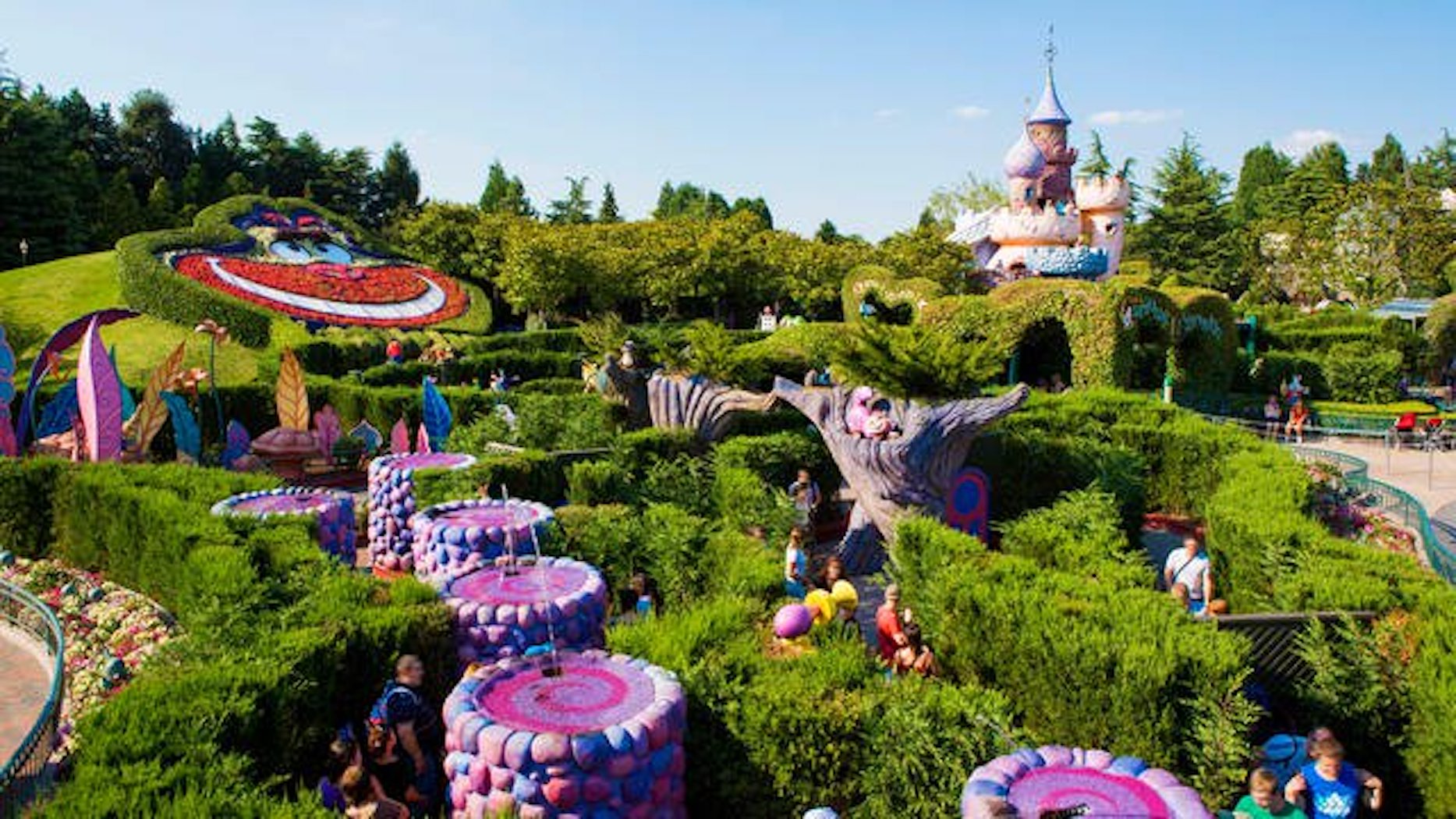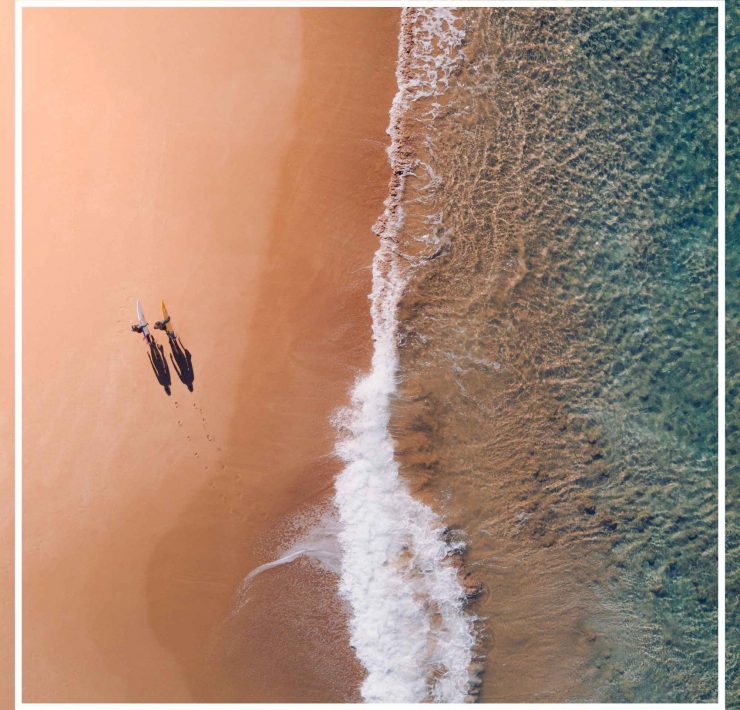5 Australian Spots Where It’s Still Warm Enough To Swim

Matilda is a British-Australian-French freelance writer. She has flat-packed IKEA…
Look, I get it. The central heating’s going on, cheese toasties are becoming more of a dire necessity than usual for their warming properties, and you’re running out of excuses to stay bundled up in a doona burrito all day. Winter isn’t coming – it’s well and truly here.
As the mornings get frostier and the wait for delayed trains less bearable, it’s only fair that you’ll start dreaming of far off balmy lands, and your internet history will contain searches like “house prices Barbados”. But fear not – we’ve compiled a list of sun-soaked destinations closer to home; places in Australia where there’s a still a chance of seeing a skerrick of sun in June, and where swimming outside is more than just a pipe dream.
#1 Darwin
Winter temperature: 28°C – 32°C
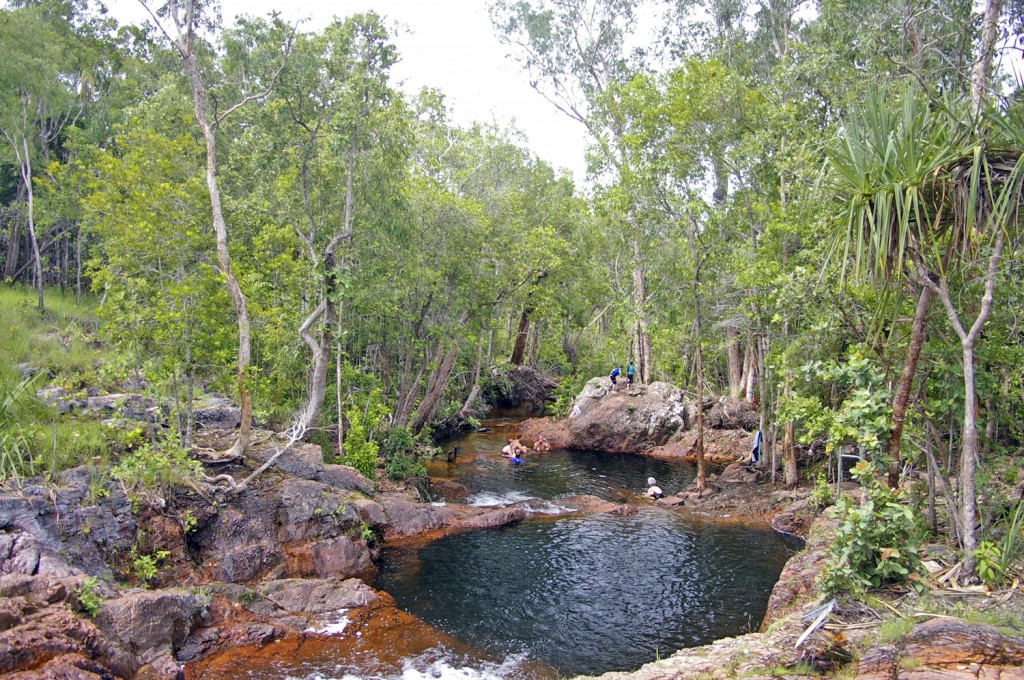
Surrounded by sea on three sides, it’s very rare that you’ll need any sort of doona burrito in the Top End. Darwin, I reckon, is underrated. Sure, it’s small, and sure, you can’t swim in many of the beaches lest you’re dismembered by a crocodile, but Darwin’s full of plenty of unexpected surprises.
For a start, there’s a brilliant man-made wave pool right on the waterfront where you can splash around free from any vicious creatures. Then, take a stroll down to the gorgeous strip of waterfront restaurants and bars to just bask in the heat with a beer or 16.
In terms of outdoor fun, Litchfield National Park is only about 100 kilometres from the Darwin CBD and is well worth day-tripping to. With beautiful swimming holes surrounded by monsoon forest, huge termite mounds and what is allegedly world-famous cheesecake from the Litchfield Café, what more could you want?
#2 Exmouth
Winter temperature: 25°C – 30°C
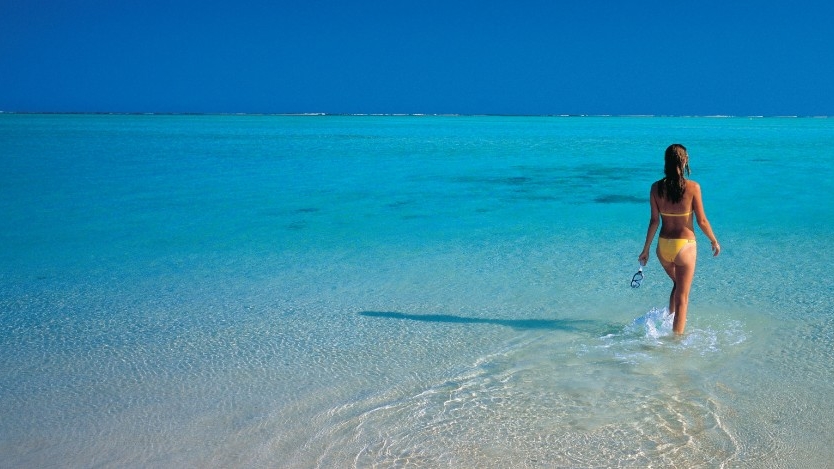
Nestled on a peninsula on the north-west coast of Australia sits Exmouth, where the temperature rarely dips below the 20s. It’s paradise for lovers of nature – the water at Turquoise Bay is true to its name and genuinely as clear as it looks on the front of travel brochures; and swimming with underwater friends like dolphins, turtles and humpback whales is a genuine possibility.
Ningaloo Reef, accessible from the shore of Exmouth, is one of the most untouched, pristine reefs in the world – the largest fringing reef in the world and a haven for eco-tourism (which you should definitely experience!). You can do a glass-bottomed boat tour through the stunning coral reef, or for the more adventurous souls, sea kayaking through the reef is almost an out-of-body experience.
Back on land, Cape Range National Park is a stunning red backdrop in contrast to the vast water and rainbow-hued reef – explore the huge canyons and there’ll be plenty more beautiful Australian fauna to befriend.
#3 Broome
Winter temperature: 25°C – 34°C
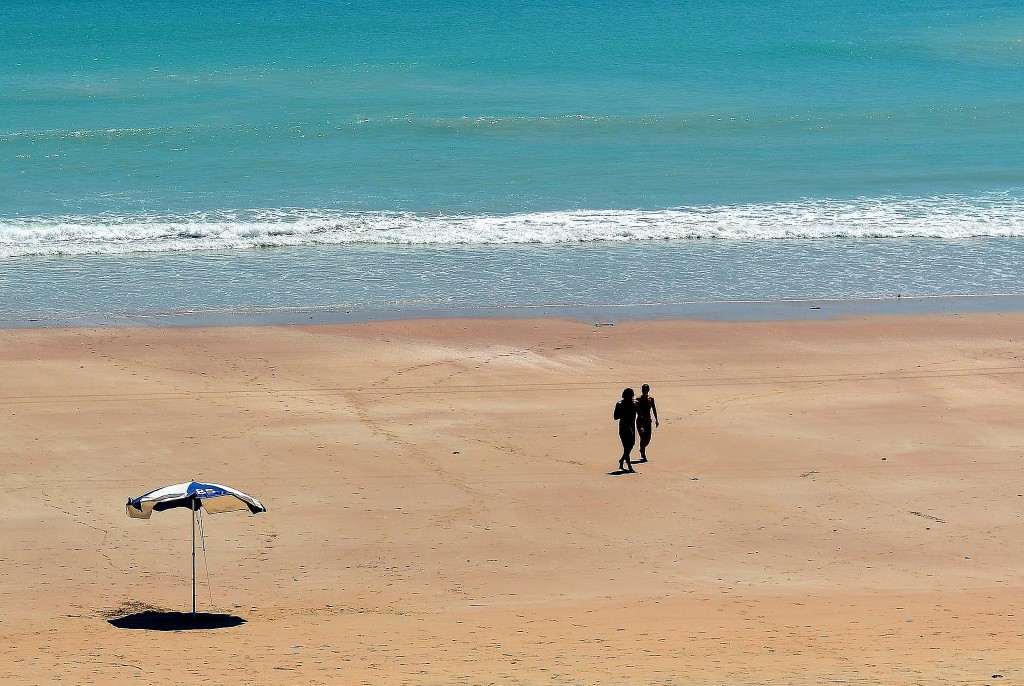
It’s the dry season in northern Western Australia’s Broome – long balmy days with no chance of a torrential downpour (not naming names, MELBOURNE). It’s a unique blend of cultures that is about as authentic as it gets – from the city centre’s Chinatown to the indigenous communities, it’s an area of exploration where you can see Australia as you’ve never known it.
While away your nights at the world’s oldest outdoor cinema, and spend your days in near isolation discovering the land that surrounds remote Broome. The Kimberleys are one of Australia’s last untouched patches of wilderness – from lush beaches to vast rainforests and stunning gorges and waterfalls, the Kimberleys are incredibly rich in Aboriginal history, which is well worth exploring.
Broome is home to the only waterfalls that fall sideways, so take a trip to Horizontal Falls to question everything you thought you knew about gravity. If you’re heading down before October, Roebuck Bay – just walking distance from the stunning little Broome town centre – is a prime location to spot the Staircase To The Moon phenomenon, where the full moon casts an eerie glow over the sea that really does look as though you could climb right up it.
#4 Cairns
Winter temperature: 23°C – 30°C

More than just the destination of many of your primary school family holidays (after the Gold Coast theme parks of course), Cairns and nearby Port Douglas are a tropical paradise right in our backyard, so to speak. North Queensland locals consider 16° to be about as cold as it gets, and the region is, understandably, home to some of the country’s finest food, with immediate access to the freshest produce from Australia’s best climates. I mean, you’ve sold me already.
Basing yourself in Cairns gives you easy access to the stunning Great Barrier Reef, the hugely lush Daintree Rainforest and the Atherton Tablelands. In the city you have the Botanic Gardens, the Kuranda Scenic Railway and the Esplanade Boardwalk which boasts a swimming lagoon and is brilliant for a long, romantic walk in the sunset. Or a non-romantic one at that.
#5 Hayman Island
Winter temperature: 23°C – 30°C

If you want ~luxury~, you can’t go much further than Hayman Island. The northernmost Whitsunday Island, it’s essentially a private island open to the public, with nothing but luxury resorts and beaches that look like they’ve been Photoshopped to perfection.
Another one of North Queensland’s gems, Hayman offers a front-row seat to the Great Barrier Reef, and despite being a pretty tiny island you’ve got just about every summer luxury you could possibly want. Snorkelling and diving? Sure. Waterskiing? No worries. Seaplanes and helicopters? DUH! And just to ease your conscience – it may be a luxury resort, but Hayman pour money into giving the Great Barrier Reef ecosystem the TLC it deserves.
Matilda is a British-Australian-French freelance writer. She has flat-packed IKEA furniture in London and Melbourne, and no idea what's coming next. She’s written for The Guardian, FasterLouder, mX and Grazia, and really likes hot chocolate.

